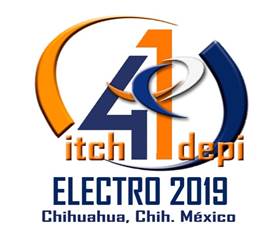
Revista ELECTRO

Vol. 41 – Año 2019
Artículo
TÍTULO
Sistema de Tratamiento de Agua Jabonosa Empleando Machine Learning
AUTORES
Luis Alberto Reyes Ibarra, Perla Alejandra Herrera Castillo, Christian Ríos Chavarría
RESUMEN
El proyecto pretende ser un instrumento en casas habitación que cuenten con una lavadora, ya que el prototipo diseñado toma como entrada el agua de enguaje de lavadoras convencional o automática. El objetivo es tratar el agua de enguaje o jabonosa para darle diversos usos comunes en una casa. El sistema de tratamiento utiliza diversos componentes como un agitador, inyector de minerales, filtro adaptado para las características del agua, etapa de sensado y principalmente un algoritmo inteligente que permi te clasificar el uso que se puede dar al agua una vez tratada. Este algoritmo es implementado en una Raspberry Pi 3 en conjunto con una etapa de sensores de pH y t urbidez. La principal ventaja de este prototipo es que utiliza un árbol de decisión inteligente que aporta certeza en la determinación del uso del agua. La automatización del sistema coadyuva al uso efectivo del agua. Además se busca reducir el consumo de agua el cual es excesivo debido a que en promedio se consumen 200 litros en ciclos de lavados, esos litros pueden ser reutilizados haciendo el tratamiento adecuado mediante el uso de e ste prototipo.
Palabras Clave: Tratamiento de Agua, Raspberry Pi 3, Python, Ph, Turbidez
ABSTRACT
The project aims to be an instrument in houses that have a washing machine, s ince the designed prototype takes as input the conventional or automatic washing machine water. The goal is to treat the glued or soapy water to give it various common uses in a house. The treatment system uses various components such as a stirrer, mineral injector, filter adapted to the characteristics of the water, sensing stage and mainly an intelligent algorithm that allows to classify the use that can be given to the water once treated. This algorithm is implemented in a Raspberry Pi 3 in conjunction w ith a stage of pH and turbidity sensors. The main advantage of this prototype is that it uses an intelligent decision tree that provides certainty in determining the use of water. In addition, the automation of the system contributes to the effective use of water. It also seeks to reduce water consumption which is excessive because on average 200 liters are consumed in wash ing cycles, those liters can be reused by making the appropriate treatment through the use of this prototype.
Keywords: Tratamiento de Agua, Raspberry Pi 3, Python, Ph, Turbidez
REFERENCIAS
[1] Primera encuesta nacional sobre consumo de energéticos en viviendas particulares (ENCEVI)/ Comunicado de prensa núm. 541/18 /Noviembre de 2018/ www.inegi.org.mx
[2] Scikit-learn: Machi ne Learning in Python. Journal of Machine Learning Research 12: 2825-2830. 2011.
[3] Dreijer, Janto. scikit-learn
[4] https://sci kit-learn.org/stable/about.html#history
[5] https://scikit-learn.org/stable/modules/tree.html#classification
[6] Sensor de turbidez Obtenido de: https://wiki.dfrobot.com/PH_meter_SKU__SEN0161_
[7] Sensor de turbidez Obtenido de: https://wiki.dfrobot.com/Turbidity_sensor_SKU__SEN0189
[8] Turbidez. Obtenido de: https://es.wikipedia.org/wiki/Turbidez
[9] Tratamiento de aguas industriales: Aguas de proce sos y residuales /Miguel Rigola Lapeña /Marcombo 1989
[10] Ecuaciones y cálculos para el tratamiento de aguas/José Mario Díaz Fernández/E. Paraninfo/2018
CITAR COMO:
Luis Alberto Reyes Ibarra, Perla Alejandra Herrera Castillo, Christian Ríos Chavarría, "Sistema de Tratamiento de Agua Jabonosa Empleando Machine Learning", Revista ELECTRO, Vol. 41, 2019, pp. 248-253.
VERSIÓN PDF